Lenovo 20L3000LUK User Manual
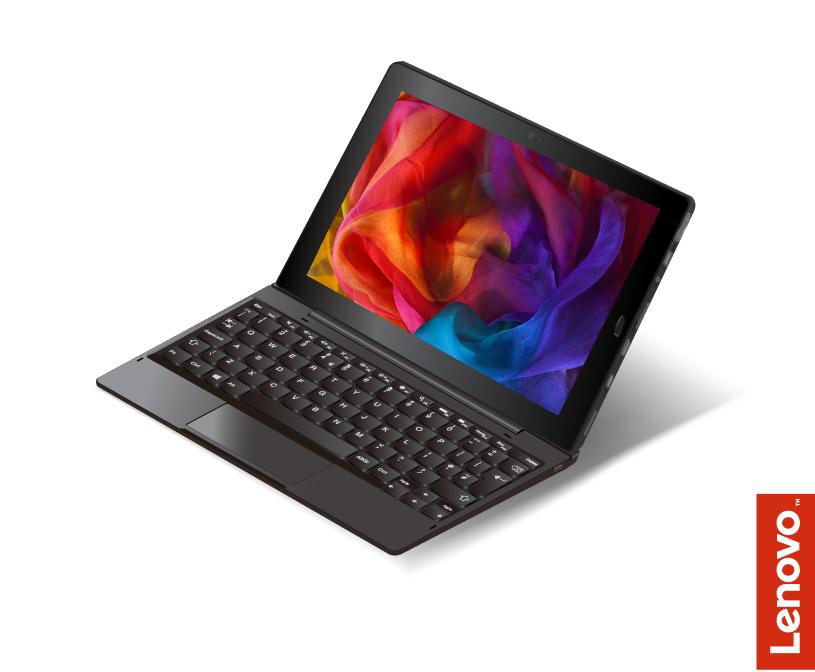
Lenovo Tablet 10 User Guide
Welcome
Before using your computer and this user guide, be sure to read the Safety, Warranty, and Setup Guide that comes with your computer.
Lenovo® makes constant improvement on the documentation of your computer. To get all the latest documents, go to https://support.lenovo.com.
Note: Your computer might look slightly different from illustrations in this user guide.
First Edition (April 2018)
© Copyright Lenovo 2018.
LIMITED AND RESTRICTED RIGHTS NOTICE: If data or software is delivered pursuant to a General Services Administration “GSA” contract, use, reproduction, or disclosure is subject to restrictions set forth in Contract No. GS- 35F-05925.

Contents
Important safety information . . . . . .iii
Read this first. . . . . . . . . . . . . . . . . iii
Conditions that require immediate action . . . . . . iii
Service and upgrades . . . . . . . . . . . . |
. iv |
Power cords and power adapters . . . . . . . . |
. v |
Extension cords and related devices. . . . . . . |
. v |
Plugs and outlets . . . . . . . . . . . . . . |
. vi |
Power supply statement . . . . . . . . . . . |
. vi |
External devices . . . . . . . . . . . . . . |
. vii |
General battery notice . . . . . . . . . . . . |
. vii |
Notice for built-in rechargeable battery. . . . . . |
. vii |
Heat and product ventilation . . . . . . . . . . |
viii |
Electrical current safety information . . . . . . . |
. ix |
Liquid crystal display (LCD) notice . . . . . . . |
. x |
Using headphones or earphones . . . . . . . . |
. x |
Choking hazard notice . . . . . . . . . . . . |
. x |
Plastic bag notice . . . . . . . . . . . . . . |
. x |
Glass parts notice . . . . . . . . . . . . . . |
. xi |
Chapter 1. Meeting your 2-in-1 detachable computer . . . . . . . . . . 1
Connectors and indicators . . . |
. . |
. |
. . . . |
. |
1 |
Features and specifications . . . |
. . |
. |
. . . . |
. |
3 |
Operating environment . . . . . . . . . . . . . 4
Chapter 2. Getting Started . . . . . . . 5
Setting up your computer . . . . |
. . |
. |
. . . . |
. |
5 |
Using the multi-touch screen . . |
. . |
. |
. . . . |
. |
5 |
Connecting to a wireless network . |
. . |
. |
. . . . |
. |
7 |
Connecting to a wired network . . |
. . |
. |
. . . . |
. |
8 |
Power button and power settings . |
. . |
. |
. . . . |
. |
8 |
Chapter 3. Using your computer . . . |
11 |
Registering your computer . . . . . . . . . . |
11 |
Discovering Lenovo apps . . . . . . . . . . . |
11 |
Using an external display . . . . . . . . . . . |
11 |
Using Bluetooth devices . . . . . . . . . . . |
12 |
Using NFC devices . . . . . . . . . . . . . |
12 |
Using a microSD card . . . . . . . . . . . . |
14 |
Using the fingerprint reader . . . . . . . . . . |
15 |
Using the cameras. . . . . . . . . . . . . . |
16 |
Using passwords . . . . . . . . . . . . . . |
16 |
Accessing computer settings . . . . . . . . . |
17 |
Getting help about the Windows operating |
|
system . . . . . . . . . . . . . . . . . . |
17 |
Using your computer more comfortably . . . . . |
17 |
Traveling with your computer . . . . . . . . . |
18 |
Taking care of your computer . . . . . . . . . 18
Chapter 4. Accessories . . . . . . . . |
21 |
Finding accessories . . . . . . . . . . . . . |
21 |
Integrated Active Pen . . . . . . . . . . . . |
21 |
Lenovo Tablet 10 Keyboard . . . . . . . . . . |
22 |
Overview . . . . . . . . . . . . . . . |
23 |
Attaching the keyboard to your computer . . . 24 |
|
Using the keyboard . . . . . . . . . . . |
24 |
Using the clickpad . . . . . . . . . . . . |
25 |
Using the clickpad touch gestures. . . . . . |
26 |
Chapter 5. Advanced
configuration . . . . . . . . . . . . . . 27
Installing device drivers . . . . . . . . . . . . |
27 |
Lenovo Tablet Setup app . . . . . . . . . . . |
27 |
Main menu . . . . . . . . . . . . . . . |
28 |
Config menu . . . . . . . . . . . . . . |
28 |
Date/Time menu. . . . . . . . . . . . . |
30 |
Security menu . . . . . . . . . . . . . |
30 |
Startup menu . . . . . . . . . . . . . . |
34 |
Restart menu . . . . . . . . . . . . . . |
34 |
Updating the UEFI BIOS . . . . . . . . . . . |
35 |
System management. . . . . . . . . . . . . |
35 |
Chapter 6. Accessibility . . . . . . . . |
37 |
Chapter 7. Troubleshooting . . . . . . |
41 |
Frequently asked questions . . . . . . . . . . |
41 |
Error messages . . . . . . . . . . . . . . . |
43 |
Lenovo Vantage. . . . . . . . . . . . . . . |
44 |
Windows recovery apps . . . . . . . . . . . |
44 |
Resetting your computer . . . . . . . . . |
44 |
Using advanced startup options . . . . . . |
44 |
Recovering your operating system if the |
|
Windows 10 operating system fails to start . . |
45 |
Creating and using a recovery USB drive . . . |
45 |
Lenovo factory recovery USB key . . . . . . . . |
46 |
Customer Replaceable Units. . . . . . . . . . |
46 |
Lenovo Support Web site . . . . . . . . . . . |
47 |
Lenovo Customer Support Center . . . . . . . |
47 |
Purchasing additional services . . . . . . . . . |
48 |
Appendix A. Regulatory
information . . . . . . . . . . . . . . . 49
Certification-related information . . . . . . . . |
49 |
Regulatory labels . . . . . . . . . . . . . . |
49 |
Labels for the Windows operating system . . . . |
49 |
© Copyright Lenovo 2018 |
i |
Wireless-related information . . . . . . . . . . |
50 |
Appendix B. WEEE and recycling |
|
Wireless interoperability . . . . . . . . . . |
50 |
statements of countries and |
|
Usage environment and your health . . . . . |
50 |
regions . . . . . . . . . . . . . . . . . 55 |
|
Locating the UltraConnect wireless |
|
General recycling information . . . . . . . . . |
55 |
antennas. . . . . . . . . . . . . . . . |
50 |
Important WEEE information . . . . . . . . . . |
55 |
Wireless-radio compliance information . . . . |
51 |
Japan recycling statements . . . . . . . . . . |
56 |
TCO certification . . . . . . . . . . . . . . |
52 |
Recycling information for Brazil. . . . . . . . . |
57 |
Export classification notice . . . . . . . . . . |
52 |
Battery recycling information for the European |
|
Electronic emission notice. . . . . . . . . . . |
52 |
Union . . . . . . . . . . . . . . . . . . . |
57 |
Federal Communications Commission |
|
Battery recycling information for Taiwan . . . . . |
58 |
Declaration of Conformity . . . . . . . . . |
52 |
Battery recycling information for the United States |
|
Industry Canada Class B emission |
|
and Canada . . . . . . . . . . . . . . . . |
58 |
compliance statement . . . . . . . . . . |
52 |
Recycling information for China . . . . . . . . |
58 |
European Union conformity . . . . . . . . |
53 |
Appendix C. Restriction of |
|
German Class B compliance statement. . . . |
53 |
|
|
Japan VCCI Class B compliance statement . . |
54 |
Hazardous Substances (RoHS) Directive |
|
Japan compliance statement for products |
|
of countries and regions . . . . . . . . |
59 |
which connect to the power mains with rated |
|
Appendix D. ENERGY STAR model |
|
current less than or equal to 20 A per phase . . |
54 |
|
|
Japan notice for ac power cord . . . . . . . |
54 |
information . . . . . . . . . . . . . . . 63 |
|
Lenovo product service information for |
|
Appendix E. Notices . . . . . . . . . . |
65 |
Taiwan . . . . . . . . . . . . . . . . |
54 |
||
Eurasian compliance mark . . . . . . . . . . |
54 |
Appendix F. Trademarks . . . . . . . |
67 |
Brazil audio notice . . . . . . . . . . . . . . |
54 |
||
ii Lenovo Tablet 10 User Guide

Important safety information
Note: Read the important safety information first.
Read this first
This information can help you safely use your notebook computer. Follow and retain all information included with your computer. The information in this document does not alter the terms of your purchase agreement or the Limited Warranty. For more information, see "Warranty Information" in the Safety, Warranty, and Setup Guide that comes with your computer.
Customer safety is important. Our products are developed to be safe and effective. However, personal computers are electronic devices. Power cords, power adapters, and other features can create potential safety risks that can result in physical injury or property damage, especially if misused. To reduce these risks, follow the instructions included with your product, observe all warnings on the product and in the operating instructions, and review the information included in this document carefully. By carefully following the information contained in this document and provided with your product, you can help protect yourself from hazards and create a safer computer work environment.
Note: This information includes references to power adapters and batteries. In addition to notebook computers, some products (such as speakers and monitors) ship with external power adapters. If you have such a product, this information applies to your product. In addition, computer products contain a coin-sized internal battery that provides power to the system clock even when the computer is unplugged, so the battery safety information applies to all computer products.
Conditions that require immediate action
Products can become damaged due to misuse or neglect. Some product damage is serious enough that the product should not be used again until it has been inspected and, if necessary, repaired by an authorized servicer.
As with any electronic device, pay close attention to the product when it is turned on. On very rare occasions, you might notice an odor or see a puff of smoke or sparks vent from your product. Or you might hear sounds like popping, cracking, or hissing. These conditions might merely mean that an internal electronic component has failed in a safe and controlled manner. Or, they might indicate a potential safety issue. However, do not take risks or attempt to diagnose the situation yourself. Contact the Customer Support Center for further guidance. For a list of Service and Support phone numbers, see the following Web site:
https://pcsupport.lenovo.com/supportphonelist
Frequently inspect your computer and its components for damage or wear or signs of danger. If you have any question about the condition of a component, do not use the product. Contact the Customer Support Center or the product manufacturer for instructions on how to inspect the product and have it repaired, if necessary.
In the unlikely event that you notice any of the following conditions, or if you have any safety concerns with your product, stop using the product and unplug it from the power source and telecommunication lines until you can speak to the Customer Support Center for further guidance.
•Power cords, plugs, power adapters, extension cords, surge protectors, or power supplies that are cracked, broken, or damaged.
•Signs of overheating, smoke, sparks, or fire.
© Copyright Lenovo 2018 |
iii |

•Damage to a battery (such as cracks, dents, or creases), discharge from a battery, or a buildup of foreign substances on the battery.
•A cracking, hissing, or popping sound, or strong odor that comes from the product.
•Signs that liquid has been spilled or an object has fallen onto the computer product, the power cord, or power adapter.
•The computer product, power cord, or power adapter has been exposed to water.
•The product has been dropped or damaged in any way.
•The product does not operate normally when you follow the operating instructions.
Note: If you notice these conditions with a product (such as an extension cord) that is not manufactured for or by Lenovo®, stop using that product until you can contact the product manufacturer for further instructions, or until you get a suitable replacement.
Service and upgrades
Do not attempt to service a product yourself unless instructed to do so by the Customer Support Center or your documentation. Only use a Service Provider who is approved to repair your particular product.
Note: Some computer parts can be upgraded or replaced by the customer. Upgrades typically are referred to as options. Replacement parts approved for customer installation are referred to as Customer Replaceable Units, or CRUs. Lenovo provides documentation with instructions when it is appropriate for customers to install options or replace CRUs. You must closely follow all instructions when installing or replacing parts. The Off state of a power indicator does not necessarily mean that voltage levels inside a product are zero. Before you remove the covers from a product equipped with a power cord, always make sure that the power is turned off and that the product is unplugged from any power source. If you have any questions or concerns, contact the Customer Support Center.
Although there are no moving parts in your computer after the power cord has been disconnected, the following warnings are required for your safety.
CAUTION:
Hazardous moving parts. Keep fingers and other body parts away.
CAUTION:
Before you open the computer cover, turn off the computer and wait several minutes until the computer is cool.
iv Lenovo Tablet 10 User Guide

Power cords and power adapters
 DANGER
DANGER
Use only the power cords and power adapters supplied by the product manufacturer.
The power cords shall be safety approved. For Germany, it shall be H03VV-F, 3G, 0.75 mm2, or better. For other countries, the suitable types shall be used accordingly.
Never wrap a power cord around a power adapter or other object. Doing so can stress the cord in ways that can cause the cord to fray, crack, or crimp. This can present a safety hazard.
Always route power cords so that they will not be walked on, tripped over, or pinched by objects.
Protect power cords and power adapters from liquids. For instance, do not leave your power cord or power adapter near sinks, tubs, toilets, or on floors that are cleaned with liquid cleansers. Liquids can cause a short circuit, particularly if the power cord or power adapter has been stressed by misuse. Liquids also can cause gradual corrosion of power cord terminals and/or the connector terminals on a power adapter, which can eventually result in overheating.
Ensure that all power cord connectors are securely and completely plugged into receptacles.
Do not use any power adapter that shows corrosion at the ac input pins or shows signs of overheating (such as deformed plastic) at the ac input pins or anywhere on the power adapter.
Do not use any power cords where the electrical contacts on either end show signs of corrosion or overheating or where the power cord appears to have been damaged in any way.
To prevent possible overheating, do not cover the power adapter with clothing or other objects when the power adapter is plugged into an electrical outlet.
Extension cords and related devices
Ensure that extension cords, surge protectors, uninterruptible power supplies, and power strips that you use are rated to handle the electrical requirements of the product. Never overload these devices. If power strips are used, the load should not exceed the power strip input rating. Consult an electrician for more information if you have questions about power loads, power requirements, and input ratings.
© Copyright Lenovo 2018 |
v |
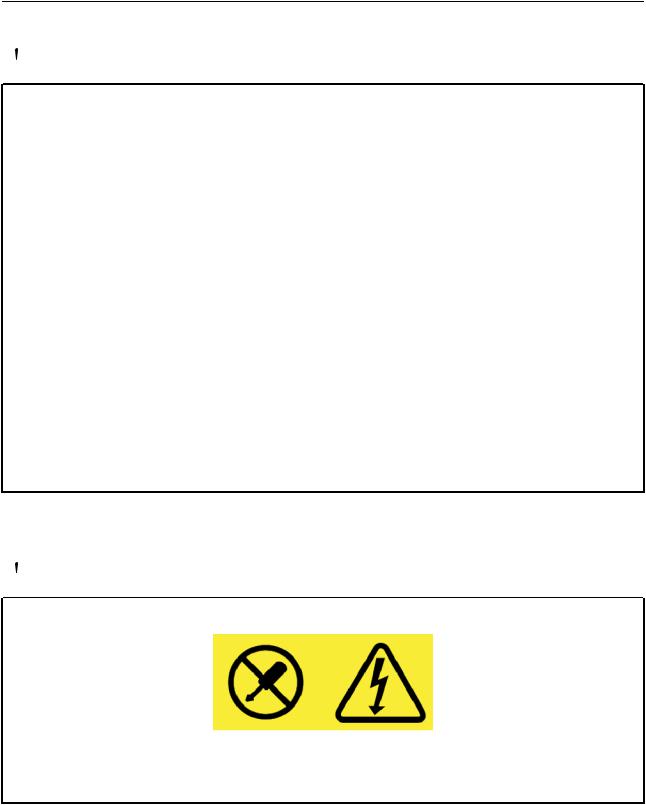
Plugs and outlets
 DANGER
DANGER
If a receptacle (power outlet) that you intend to use with your computer equipment appears to be damaged or corroded, do not use the outlet until it is replaced by a qualified electrician.
Do not bend or modify the plug. If the plug is damaged, contact the manufacturer to obtain a replacement.
Do not share an electrical outlet with other home or commercial appliances that draw large amounts of electricity; otherwise, unstable voltage might damage your computer, data, or attached devices.
Some products are equipped with a three-pronged plug. This plug fits only into a grounded electrical outlet. This is a safety feature. Do not defeat this safety feature by trying to insert it into a non-grounded outlet. If you cannot insert the plug into the outlet, contact an electrician for an approved outlet adapter or to replace the outlet with one that enables this safety feature. Never overload an electrical outlet. The overall system load should not exceed 80 percent of the branch circuit rating. Consult an electrician for more information if you have questions about power loads and branch circuit ratings.
Be sure that the power outlet you are using is properly wired, easily accessible, and located close to the equipment. Do not fully extend power cords in a way that will stress the cords.
Be sure that the power outlet provides the correct voltage and current for the product you are installing.
Carefully connect and disconnect the equipment from the electrical outlet.
Power supply statement
 DANGER
DANGER
Never remove the cover on a power supply or any part that has the following label attached.
Hazardous voltage, current, and energy levels are present inside any component that has this label attached. There are no serviceable parts inside these components. If you suspect a problem with one of these parts, contact a service technician.
vi Lenovo Tablet 10 User Guide
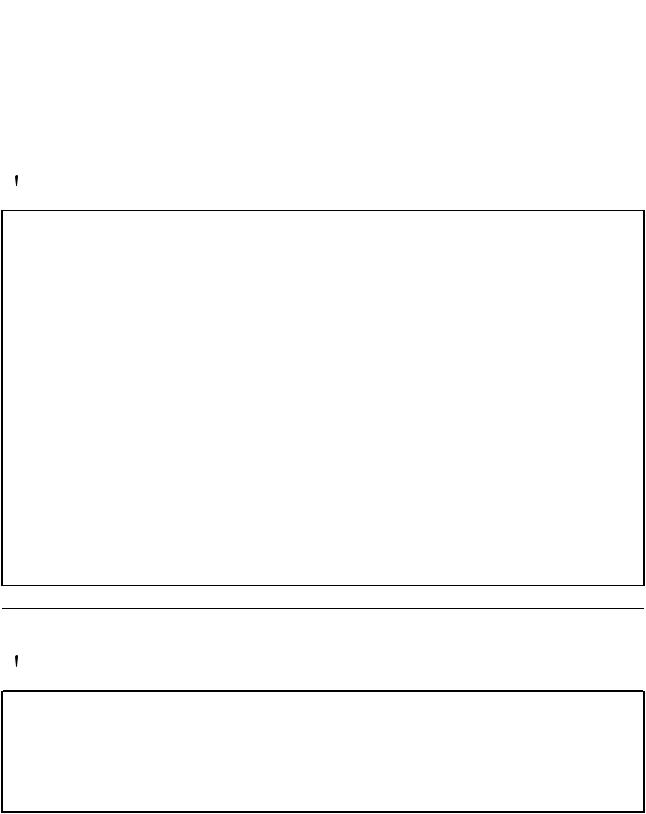
External devices
CAUTION:
Do not connect or disconnect any external device cables other than Universal Serial Bus (USB) and 1394 cables while the computer power is on; otherwise, you might damage your computer. To avoid possible damage to attached devices, wait at least five seconds after the computer is shut down to disconnect external devices.
General battery notice
 DANGER
DANGER
Batteries supplied by Lenovo for use with your product have been tested for compatibility and should only be replaced with approved parts. A battery other than the one specified by Lenovo, or a disassembled or modified battery is not covered by the warranty.
Battery abuse or mishandling can cause overheat, liquid leakage, or an explosion. To avoid possible injury, do the following:
•Do not open, dissemble, or service any battery.
•Do not crush or puncture the battery.
•Do not short-circuit the battery, or expose it to water or other liquids.
•Keep the battery away from children.
•Keep the battery away from fire.
Stop using the battery if it is damaged, or if you notice any discharge or the buildup of foreign materials on the battery leads.
Store the rechargeable batteries or products containing the rechargeable batteries at room temperature, charged to approximately 30 to 50% of capacity. We recommend that the batteries be charged about once per year to prevent overdischarge.
Do not put the battery in trash that is disposed of in landfills. When disposing of the battery, comply with local ordinances or regulations.
Notice for built-in rechargeable battery
 DANGER
DANGER
Do not attempt to remove or replace the built-in rechargeable battery. Replacement of the battery must be done by a Lenovo-authorized repair facility or technician.
Only recharge the battery strictly according to instructions included in the product documentation.
The Lenovo-authorized repair facilities or technicians recycle Lenovo batteries according to local laws and regulations.
© Copyright Lenovo 2018 |
vii |
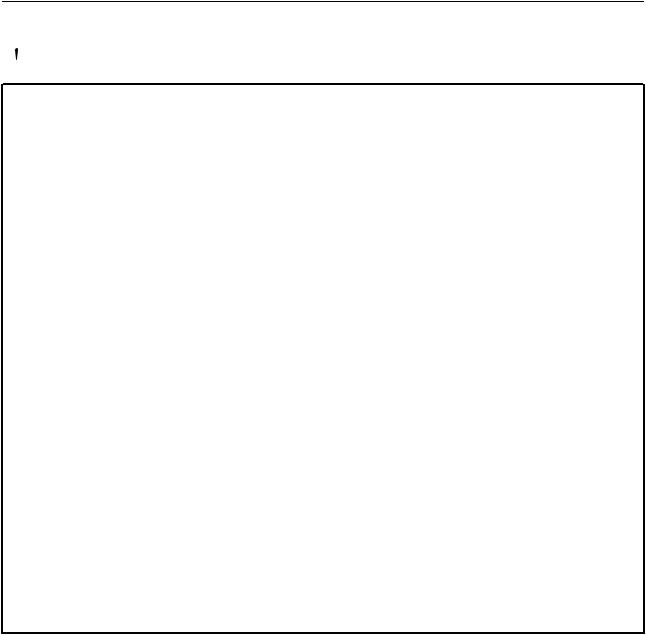
Heat and product ventilation
 DANGER
DANGER
Computers, ac power adapters, and many accessories can generate heat when turned on and when batteries are charging. Notebook computers can generate a significant amount of heat due to their compact size. Always follow these basic precautions:
•When your computer is turned on or the battery is charging, the base, the palm rest, and some other parts may become hot. Avoid keeping your hands, your lap, or any other part of your body in contact with a hot section of the computer for any extended length of time. When you use the keyboard, avoid keeping your palms on the palm rest for a prolonged period of time. Your computer generates some heat during normal operation. The amount of heat depends on the amount of system activity and the battery charge level. Extended contact with your body, even through clothing, could cause discomfort or even a skin burn. Periodically take breaks from using the keyboard by lifting your hands from the palm rest; and be careful not to use the keyboard for any extended length of time.
•Do not operate your computer or charge the battery near flammable materials or in explosive environments.
•Ventilation slots, fans and/or heat sinks are provided with the product for safety, comfort, and reliable operation. These features might inadvertently become blocked by placing the product on a bed, sofa, carpet, or other flexible surface. Never block, cover, or disable these features.
•When the ac power adapter is connected to an electrical outlet and your computer, it generates heat. Do not place the adapter in contact with any part of your body while using it. Never use the ac power adapter to warm your body. Extended contact with your body, even through clothing, may cause a skin burn.
For your safety, always follow these basic precautions with your computer:
•Keep the cover closed whenever the computer is plugged in.
•Regularly inspect the outside of the computer for dust accumulation.
•Remove dust from vents and any perforations in the bezel. More frequent cleanings might be required for computers in dusty or high-traffic areas.
•Do not restrict or block any ventilation openings.
•Do not operate your computer inside furniture, as this might increase the risk of overheating.
•Airflow temperatures into the computer should not exceed 35°C (95°F).
viii Lenovo Tablet 10 User Guide

Electrical current safety information
 DANGER
DANGER
Electric current from power, telephone, and communication cables is hazardous.
To avoid a shock hazard:
•Do not use your computer during a lightning storm.
•Do not connect or disconnect any cables or perform installation, maintenance, or reconfiguration of this product during an electrical storm.
•Connect all power cords to a properly wired and grounded electrical outlet.
•Connect to properly wired outlets any equipment that will be attached to this product.
•Whenever possible, use one hand only to connect or disconnect signal cables.
•Never turn on any equipment when there is evidence of fire, water, or structural damage.
•Disconnect the attached power cords, battery, and all the cables before you open the device covers, unless instructed otherwise in the installation and configuration procedures.
•Do not use your computer until all internal parts enclosures are fastened into place. Never use the computer when internal parts and circuits are exposed.
 DANGER
DANGER
Connect and disconnect cables as described in the following procedures when installing, moving, or opening covers on this product or attached devices.
To connect:
1.Turn everything OFF.
2.First, attach all cables to devices.
3.Attach signal cables to connectors.
4.Attach power cords to outlets.
5.Turn devices ON.
To disconnect:
1.Turn everything OFF.
2.First, remove power cords from outlets.
3.Remove signal cables from connectors.
4.Remove all cables from devices.
The power cord must be disconnected from the wall outlet or receptacle before installing all other electrical cables connected to the computer.
The power cord may be reconnected to the wall outlet or receptacle only after all other electrical cables have been connected to the computer.
 DANGER
DANGER
During electrical storms, do not perform any replacement and do not connect the telephone cable to or disconnect it from the telephone outlet on the wall.
© Copyright Lenovo 2018 |
ix |

Liquid crystal display (LCD) notice
CAUTION:
The liquid crystal display (LCD) is made of glass, and rough handling or dropping the computer can cause the LCD to break. If the LCD breaks and the internal fluid gets into your eyes or on your hands, immediately wash the affected areas with water for at least 15 minutes; if any symptoms are present after washing, get medical care.
Note: For products with mercury-containing fluorescent lamps (for example, non-LED), the fluorescent lamp in the liquid crystal display (LCD) contains mercury; dispose of according to local, state, or federal laws.
Using headphones or earphones
CAUTION:
Excessive sound pressure from earphones and headphones can cause hearing loss. Adjustment of the equalizer to maximum increases the earphone and headphone output voltage and the sound pressure level. Therefore, to protect your hearing, adjust the equalizer to an appropriate level.
Excessive use of headphones or earphones for a long period of time at high volume can be dangerous if the output of the headphone or earphone connectors do not comply with specifications of EN 50332-2. The headphone output connector of your computer complies with EN 50332-2 Sub clause 7. This specification limits the computer’s maximum wide band true RMS output voltage to 150 mV. To help protect against hearing loss, ensure that the headphones or earphones you use also comply with EN 50332-2 (Clause 7 limits) for a wide band characteristic voltage of 75 mV. Using headphones that do not comply with EN 50332- 2 can be dangerous due to excessive sound pressure levels.
If your Lenovo computer came with headphones or earphones in the package, as a set, the combination of the headphones or earphones and the computer already complies with the specifications of EN 50332-1. If different headphones or earphones are used, ensure that they comply with EN 50332-1 (Clause 6.5 Limitation Values). Using headphones that do not comply with EN 50332-1 can be dangerous due to excessive sound pressure levels.
Choking hazard notice
CHOKING HAZARD – Product contains small parts.
Keep away from children under three years.
Plastic bag notice
 DANGER
DANGER
Plastic bags can be dangerous. Keep plastic bags away from babies and children to avoid danger of suffocation.
x Lenovo Tablet 10 User Guide

Glass parts notice
CAUTION:
Some parts of your product may be made of glass. This glass could break if the product is dropped on a hard surface or receives a substantial impact. If glass breaks, do not touch or attempt to remove it. Stop using your product until the glass is replaced by trained service personnel.
© Copyright Lenovo 2018 |
xi |
xii Lenovo Tablet 10 User Guide
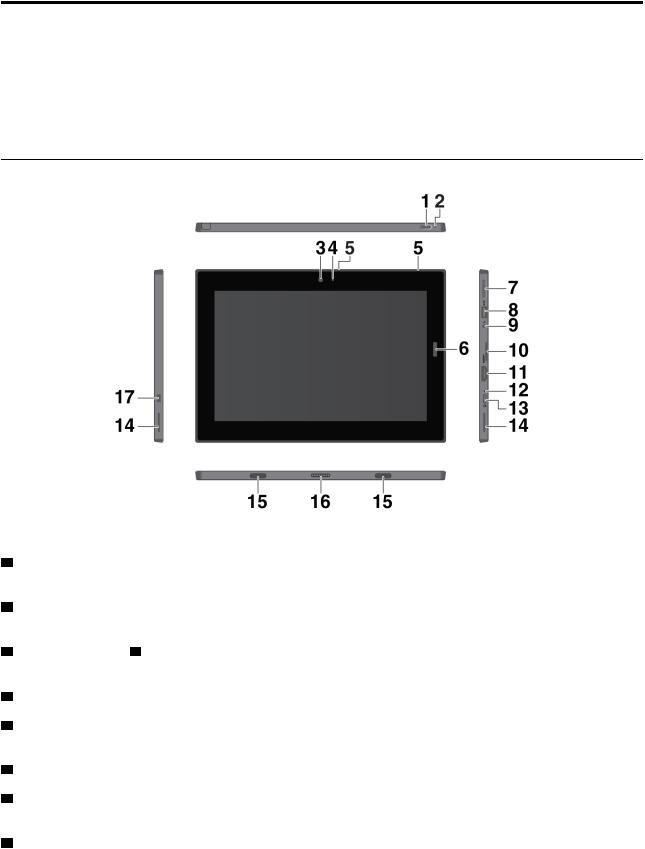
Chapter 1. Meeting your 2-in-1 detachable computer
Get an overview of the computer, such as the connectors, indicators, features, specifications, and operating environment.
Note: Your computer might look slightly different from the illustrations in this chapter.
Connectors and indicators
Note: The connectors and indicators shown with an asterisk (*) are available on some models.
1Power button Press the power button to turn on your computer. You also can: use the power button to put the computer to sleep and wake it.
2Emergency-reset hole If your computer stops responding, remove: the ac power adapter first, and then insert a straightened paper clip into the emergency-reset hole to reset the computer.
3Front camera and 4 Camera-status indicator Use the 2-megapixel front-facing camera to take photos and make videos. When the camera is on, the camera-status indicator turns on.
5Microphones Use the microphones to make calls and recordings.
6Fingerprint reader* Use the fingerprint reader to log in to your computer instead of entering: the password. See “Using the fingerprint reader” on page 15.
7Volume-control buttons Use these buttons to turn up or turn down the volume of the computer. :
8USB 3.1 connector Gen 1 Connect USB:-compatible devices, such as a USB keyboard, USB mouse, or USB storage device.
9 Audio connector Connect headphones or a headset to listen to the sound from the computer. |
: |
© Copyright Lenovo 2018 |
1 |
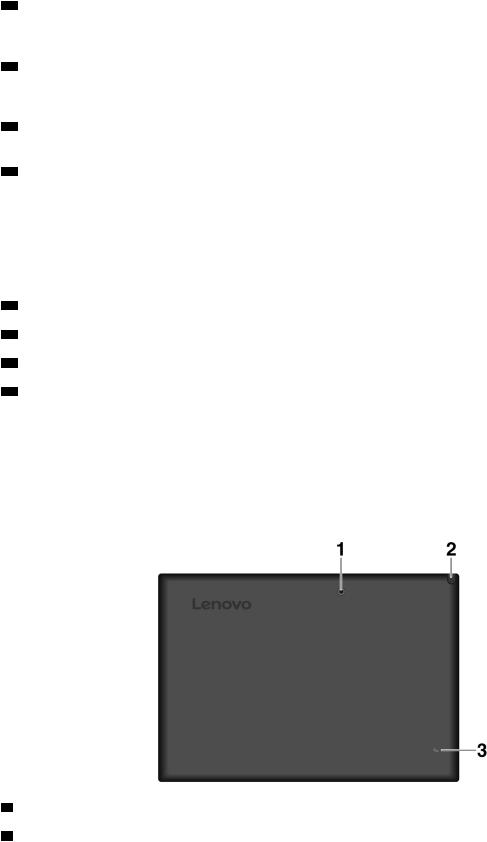
10 Nano-SIM-card and microSD card tray Use the microSD card (sold separately): to transfer or store files. See “Using a microSD card” on page 14. Use the nano Subscriber Identity Module (SIM) card * to connect to a mobile broadband network. See “Connecting to a wireless network” on page 7.
11 |
HDMI |
connector The High-Definition Multimedia Interface™(HDMI) connector is a digital audio and |
: |
video interface. It enables you to connect your computer to a compatible digital audio device or video |
|
||
monitor, such as a high-definition television (HDTV). |
|
||
12 |
ac power status indicator The ac power status indicator turns on white when the computer is |
: |
|
connected to ac power. |
|
||
13 |
USB-C |
connector Use the USB-C connector to charge your computer™and connect to a compatible |
: |
device to transfer data. Lenovo provides various USB-C accessories to help you expand your computer |
|
||
functionality. For more information, go to: |
|
||
https://www.lenovo.com/accessories
Note: When the battery power is below 10%, the USB-C accessories connected to the USB-C connector might not work correctly.
14 Stereo speakers The stereo speakers provide an immersive music and movie playback experience. |
: |
15Fixing holes Use the fixing holes to attach a supported keyboard: and fix it in place.
16Pogo interface connector Use this connector to attach a supported keyboard.
17Mini security-lock slot To protect your computer from theft,: lock your computer to a desk, table, or other fixtures through a security cable lock designed to fit the mini security-lock slot on your computer.
Note: The slot supports cable locks that conform to the Kensington MiniSaver® lock standards using Cleat locking technology. Do not attempt to use other™ types of cable locks that use a rotating T-bar locking mechanism. You are responsible for evaluating, selecting, and implementing the locking device and security feature. Lenovo makes no comments, judgments, or warranties about the function, quality, or performance of the locking device and security feature. Cable locks for your product are available from Lenovo at https://www.lenovo.com/accessories.
1Rear camera Use the 5-megapixel, high-resolution, rear-facing camera to take photos: and make videos.
2Integrated Active Pen* Your computer might be equipped with an Integrated: Active Pen. See “Integrated Active Pen” on page 21.
2 Lenovo Tablet 10 User Guide

3 NFC mark* Near field communication (NFC) enables you to transfer data: from one device to another by touching them or putting them close together. See “Using NFC devices” on page 12.
Features and specifications
Size
•Width: 261.6 mm (10.3 inches)
•Depth: 178.4 mm (7.02 inches)
•Thickness: 10.6 mm (0.42 inches)
Microprocessor and memory
To view the microprocessor and memory information, open the Start menu  and tap Settings System About .
and tap Settings System About .
Display
•Size: 256.54 mm (10.1 inches)
•Screen resolution: 1280 x 800 pixels, or 1200 x 1920 pixels
•Automatic brightness control
•Anti-fingerprint and In-Plane Switching (IPS) technology
•Widescreen Ultra eXtended Graphics Array (WUXGA) and High Definition (HD) technology
•Multi-touch technology
Cameras
•2 megapixels, fixed-focus front camera
•5 megapixels, auto-focus rear camera
Connectors and slots
•Audio connector
•HDMI connector
•USB-C connector
•USB 3.1 connector Gen 1
•Pogo interface connector
•Nano-SIM card and microSD card tray
Security features
•Password
•Mini security-lock slot
•Fingerprint reader*
•Trusted Platform Module (TPM)*
Wireless features
•Bluetooth
•Wireless local area network (WLAN)
•Near field communication (NFC)*
Chapter 1. Meeting your 2-in-1 detachable computer 3

• Wireless wide area network (WWAN)*
Power source (ac power adapter)
•Sine-wave input at 50 Hz to 60 Hz
•Input rating of the ac power adapter: 100 V ac to 240 V ac
•42 Wh Li-Polymer battery
Note: The features shown with an asterisk (*) are available on some models.
Operating environment
Maximum altitude without pressurization
5000 m (16 404 ft)
Temperature
• At altitudes up to 2438 m (8000 ft) Operating: 5.0°C to 35.0°C (41°F to 95°F) Storage: 5.0°C to 43.0°C (41°F to 109°F)
• At altitudes above 2438 m (8000 ft)
Maximum temperature when operating under unpressurized conditions: 31.3°C (88°F)
Relative humidity
•Operating: 8% to 95%
•Storage: 5% to 95%
If possible, place your computer in a dry, well-ventilated area without direct exposure to sunshine. Do not use or store your computer in dusty, dirty areas, or extremely hot or cold areas.
4 Lenovo Tablet 10 User Guide
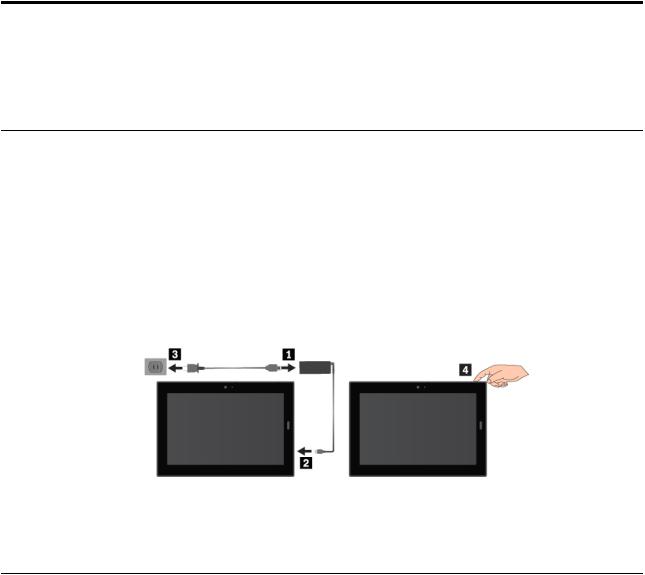
Chapter 2. Getting Started
Learn the basics to get started with your computer. Follow the instructions to set up your computer, use the multi-touch screen, connect to a network, and put your computer into proper power modes.
Setting up your computer
When you use the computer for the first time, do the following to complete the initial setup:
Attention: Use only Lenovo-approved ac power adapters. Unauthorized ac power adapters could severely damage the computer.
1.Connect the power cord to the ac power adapter.
2.Connect the ac power adapter to the USB-C connector on your computer.
3.Connect the power cord to a proper electric outlet.
4.Press the power button to turn on the computer and follow the instructions on the screen to complete the initial setup.
Note: If you have an optional pen or keyboard, refer to “Finding accessories” on page 21 for information about attaching and using these accessories.
Using the multi-touch screen
Use the touch gestures to interact with your computer.
This section introduces only the most frequently used gestures. For a whole list of supported gestures, refer to the Windows® help information. See “Getting help about the Windows operating system” on page 17.
Note: Some gestures are supported only on certain apps.
© Copyright Lenovo 2018 |
5 |

Tap
Tap on the screen to open, select, or activate the item you tap.
Slide
Slide leftward or rightward on the screen to scroll through items, such as lists, pages, and photos.
Zoom in
Put two fingers on the screen and move them farther apart to zoom in.
Rotate
Put two or more fingers on an item, and then rotate your fingers clockwise or counterclockwise.
Swipe in from the left edge
View all your open apps in task view.
Swipe in shortly from the top or bottom edge
• From the top: Show the hidden title bar in fullscreened apps.
• From the bottom: Show the taskbar in fullscreened apps.
Tips on using the multi-touch screen
Tap and hold
Tap and hold on the screen to open a menu with multiple options.
Drag
Drag an item to the desired location to move an object.
Zoom out
Put two fingers on the screen and move them closer together to zoom out.
Swipe in from the top edge to the bottom edge
Close the current fullscreened app.
Swipe in from the right edge
Open the action center.
•The multi-touch screen is a glass panel covered with a plastic film. Do not apply pressure or place any metallic object on the screen that might damage the touch panel or cause it to malfunction.
•Do not use fingernails, gloved fingers, or inanimate objects other than an approved pen for input on the screen.
6 Lenovo Tablet 10 User Guide

Tips on cleaning the multi-touch screen
•Turn off the computer before cleaning the multi-touch screen.
•Use a dry, soft, and lint-free cloth or a piece of absorbent cotton to remove fingerprints or dust from the multi-touch screen. Do not apply solvents to the cloth.
•Gently wipe the screen using a top-down motion. Do not apply any pressure on the screen.
Connecting to a wireless network
Connect your computer to the Internet or other wireless networks so that you can browse on your computer and share information.
Your computer supports the following wireless networks:
•Wi-Fi® network
The Wi-Fi feature provides network access at distances of up to 100 meters (328 feet) depending on the Wi-Fi router and your surroundings. Your computer is installed with a wireless-LAN card to support the Wi-Fi connection. The quality of the Wi-Fi signal is affected by the number of connected devices, the infrastructure, and the objects through which the signal is transmitted.
•Mobile broadband network (supported by some models)
The mobile broadband feature enables you to connect to the Internet from any location where cellular service is available. Mobile broadband connections use 3G, 4G, or LTE cellular and mobile networks, just as phones do. Mobile broadband connection is supported only on computer models with a wireless-WAN card installed.
A nano-SIM card or an external mobile broadband device is required to connect to a mobile broadband network.
Your computer also supports Bluetooth and NFC wireless communications. For more information, see “Using NFC devices” on page 12 and “Using Bluetooth devices” on page 12.
To join a wireless network:
1.Tap the wireless-network icon in the Windows notification area. A list of available wireless networks is displayed.
Note: If the Airplane mode control is on, or the Wi-Fi control or Mobile broadband control is off, the list might not be displayed. Tap the corresponding control to display the list.
2.Tap a network to join it. For secured networks, enter the valid password when prompted.
To replace or install a nano-SIM card:
The nano-SIM-card and microSD card slot is on the right side of the computer. Before you start, turn off the computer.
1.Insert a straightened paper clip into the hole in the tray 1 . The tray ejects. Then, slide the tray out of the computer. If a nano-SIM card is installed, gently take the nano-SIM card out of the tray 2 .
Chapter 2. Getting Started 7
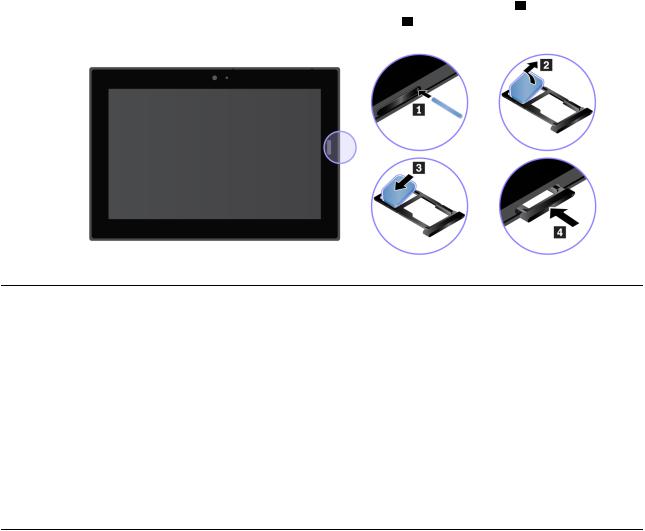
2.Install a new nano-SIM card into the tray with the metal contacts facing downward 3 . Insert the tray into the nano-SIM-card and microSD card slot until you hear a click 4 .
Connecting to a wired network
You might need to use a wired network connection through an Ethernet cable when downloading large files. With a ThinkPad USB C Ethernet Adapter, you can connect your computer to a wired network. You can also purchase it from:
https://www.lenovo.com/accessories
To connect to a wired network:
1.Connect the ThinkPad USB C Ethernet Adapter to the USB-C connector on your computer.
2.Connect an Ethernet cable into the ThinkPad USB C Ethernet Adapter.
3.Tap the wired network icon in the Windows notification area, and enter the user name and password if needed.
Power button and power settings
If you will not use the computer for a period of time, put the computer into sleep mode or turn off the computer to save power. You also can adjust the power settings to achieve the best balance between performance and power saving.
Putting your computer into sleep mode and waking up your computer
If you are not going to use the computer for just a few minutes, put your computer into sleep mode to lock it and save power.
To put your computer into sleep mode, open the Start menu  , then tap Power
, then tap Power  Sleep
Sleep
To wake up your computer from sleep mode, press the power button.
Turning off and turning on your computer
If you are not going to use the computer for long periods, turn off your computer to save power.
To turn off your computer, open the Start menu  , then tap Power
, then tap Power  Shut down
Shut down
To turn on your computer, press and hold the power button.
8 Lenovo Tablet 10 User Guide
Adjusting the power settings
To achieve the best balance between performance and power saving, adjust your power settings.
To adjust power settings, do the following:
1.Go to Control Panel. For information about accessing Control Panel, see “Accessing computer settings” on page 17.
2.Tap System and Security Power Options
3.Follow the instructions on the screen.
Chapter 2. Getting Started 9
10 Lenovo Tablet 10 User Guide
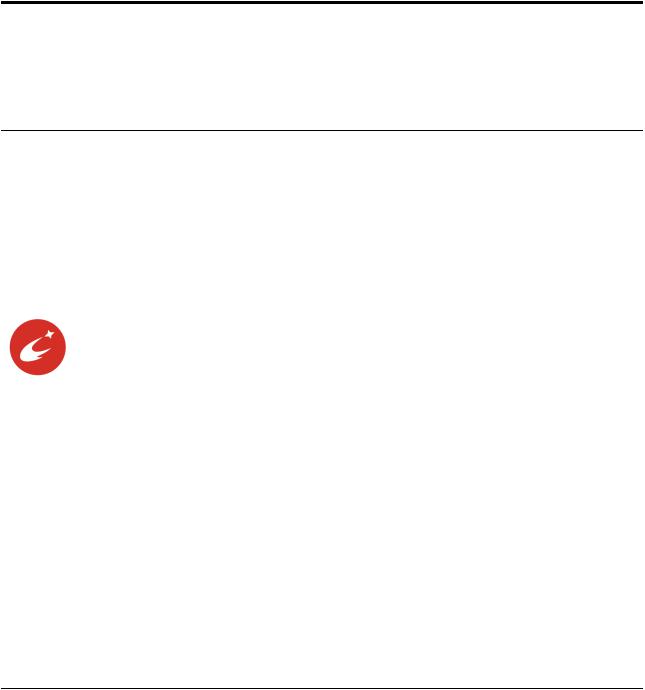
Chapter 3. Using your computer
Learn the skills to make the best use of your computer such as using Lenovo apps, connecting an NFC device, and using the fingerprint reader.
Registering your computer
To register your computer with Lenovo, go to https://support.lenovo.com/productregistration and follow the instructions on the screen.
Discovering Lenovo apps
Lenovo provides some apps to help you work more easily and securely. Preinstalled Lenovo apps are subject to change. To explore more Lenovo apps, go to https://support.lenovo.com.
Your computer’s best features and capabilities should be easy to access and understand. With Lenovo Vantage, they are.
Use Lenovo Vantage to do the following:
•Manage updates, get the latest drivers, and keep the software on your computer up-to-date.
•Protect yourself from malicious Wi-Fi networks.
•Optimize your computer performance, monitor your computer health.
•Access your user guide, check warranty status, and view accessories customized for your computer.
•Read how-to articles, explore Lenovo forums, and stay up-to-date on technology news with articles and blogs from trusted sources.
•Configure hardware settings.
•Create and manage your Lenovo ID.
This app is filled with exclusive Lenovo content to help you learn more about what you can do with your Lenovo computer.
To access Lenovo apps:
1.Open the Start menu  .
.
2.Tap a Lenovo app to open it.
3.If the app you want to use is not displayed, try searching for it in the search box.
Using an external display
Connect your computer to an external display to share a presentation or work with multiple applications.
Supported external displays
Your computer supports the following external displays:
•Up to 4096 x 2160 pixels / 30 Hz with an external display connected to the HDMI connector
•Up to 4096 x 2304 pixels / 60 Hz, with an external display connected to the USB-C connector
For more information about the external display, see the manuals that come with it.
© Copyright Lenovo 2018 |
11 |

Connecting to a wireless display
To connect to a wireless display, do the following:
1.Open the Start menu  .
.
2.Tap Settings Devices Connected devices Add a device
3.Follow the instructions on the screen.
Connecting to a wired display
Your computer has a USB-C connector. You can connect the computer to a VGA-compatible or HDMIcompatible external display through one of the following adapters:
•Lenovo USB C to HDMI plus Power Adapter
•Lenovo USB C to VGA plus Power Adapter
If your computer does not come with these adapters, you can purchase them from the Lenovo Web site at:
https://www.lenovo.com/accessories
Choosing a display mode
You can display your desktop and apps on the computer, the external display, or both.
To choose how to display the video output, do the following:
1. Open the Start menu  .
.
2. Tap Settings System Display |
. |
3. Follow the instructions on the screen to select a presentation scheme.
Using Bluetooth devices
Bluetooth is a short-range wireless communications technology. Use Bluetooth to establish a wireless connection between your computer and another Bluetooth-enabled device within a distance of about 10 m (32.8 ft).
To pair your computer with a Bluetooth device:
1.Turn on the Bluetooth device and make it discoverable. For more information, see the document that comes with the Bluetooth device.
2.Open the Start menu  , then tap Settings Devices Bluetooth Then tap the Bluetooth control to turn it on. A list of available Bluetooth devices is displayed.
, then tap Settings Devices Bluetooth Then tap the Bluetooth control to turn it on. A list of available Bluetooth devices is displayed.
3. Select the target Bluetooth device and tap Pair |
. |
Using NFC devices
Depending on the model, your computer might come with the NFC feature. NFC is a high-frequency and short-range wireless communications technology. By using the NFC feature, you can establish radio communications between your computer and another NFC-enabled device over a distance no more than a few centimeters.
This section provides the basic instructions on paring your computer with an NFC device. For more information about data transfer, refer to the documentation of the NFC device.
Attention:
12 Lenovo Tablet 10 User Guide
